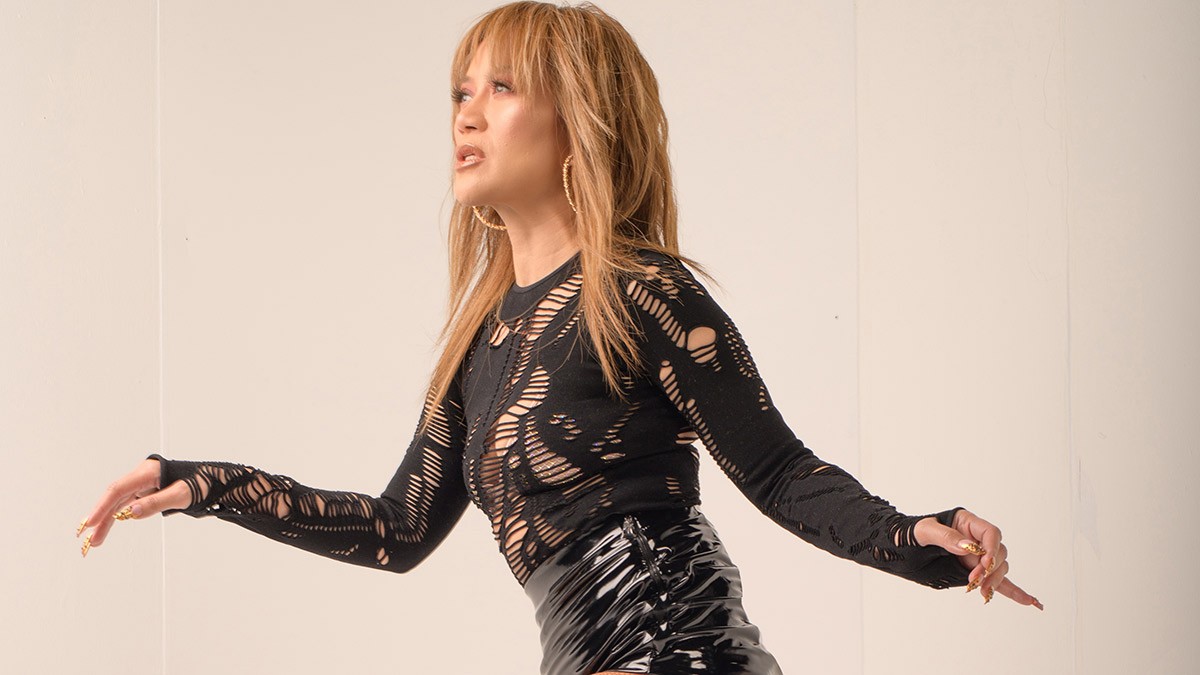
Georcelle Dapat-Sy: “A lot of families out there now understand when we say dancing can be a career.”—CONTRIBUTED PHOTOS
Dancer-choreographer Georcelle Dapat-Sy said quite a number of women enroll at her G-Force Dance Center because they either want to have a boyfriend or get pregnant.
“Believe me! We have a lot of success stories related to this,” she told Lifestyle in a recent interview. She then cited as an example the story of a celebrity (someone you would never expect to see in a dance class) who enlisted in her #whiteshirtlove program and eventually transformed from “super shy and self-conscious” to “extremely confident.”
#whiteshirtlove is a specialized dance class that Teacher Georcelle created in 2014 to cope with the postpartum depression she experienced after the birth of her third child. She admitted to having had a hard time getting back into shape.
“This is why I’m giving Maja my 100-percent support,” she said, referring to actress Maja Salvador, who gave birth to her first child in June, and is now making a show-biz comeback. “If you face the mirror and don’t appreciate what you see, then this could trigger some feelings, those that should only be passing through and aren’t supposed to stay with you.”
Dapat-Sy also said #whiteshirtlove was originally designed for mothers. However, celebrities like Anne Curtis, Solenn Heussaff and Iza Calzado attended it even before they had babies of their own.
“I use sensuality as a tool for women to feel confident, to feel empowered and be free inside my dance class. I remind them that they are in a safe space. Where else can they do sexy movements and really be in touch with their femininity other than inside my class? I must say that #whiteshirtlove has helped a lot of women regain their confidence,” Dapat-Sy said, G-Force Dance Center’s creative director.
Teacher Georcelle (center) with Maja Salvador (in red) and G-Force members during the actress’ comeback on “ASAP” —@TEACHERGEORCELLE INSTAGRAM
Also among the first to try out the program were actresses Nadine Lustre, KC Concepcion, Bella Padilla, Donita Rose, Marjorie Barretto and South Korean star Sandara Park.
Another program that’s related to wellness is called “Make Me Sweat.” Dapat-Sy explained: “You enter the class to sweat but in a fun way, and with friends. You are enjoying yourself, not knowing that you’re already strengthening your quad and glute muscles, and that you are already moving your joints—this is important because these are places where we develop moisture as we age.”
Social nature of dancing
Georcelle was quick to add that both G-Force studios—in Quezon City and at the Bonifacio Global City in Taguig—have sprung floors “to absorb shocks, giving it a softer feel to greatly reduce injuries on the knees and lower back.”
A Time article recently reported on a study being conducted on the theory that the social nature of dancing—as well as the intellectual skills required to learn steps and think about connecting different movements—contribute to the “encouraging improvements” in the tests of cognitive functions of some adults. This is compared to those who were assigned to use the treadmill for six months instead of social dancing.
We asked Georcelle to share her thoughts on the topic, based on what she has been seeing from her students. To this, she said: “Humans are social animals. We need connection. Interaction in a dance studio is perfect—you enter a class full of energy, full of people. You see people who are struggling with the same issue as you are. You’re all feeling shy and self-conscious. You then realize that you’re not alone in this journey,” she pointed out.
In relation to cognitive development, G-Force also offers hip-hop classes for adults. There’s also one specifically for students 40 years old and up.
“You will be surprised because we’ve had a student who’s already 70,” she said. “When you reach a certain age, your motor skills get challenged. What used to be a simple movement like standing up from a chair or squatting would now be too difficult and would already require effort. This also helps you mentally because you have to memorize the steps. You dance with fellow students, and so creative expression happens there, too.”
Coping skills
Dapat-Sy has been a professional dance choreographer since she was 14. She said dance has helped shape who she is as a person today. “Dancers are among the bravest and most resilient human beings. We audition and go through a lot of rejections,” she pointed out.
“Also, inside a dance class is where you are always being corrected. You receive feedback from your teacher. You have to be able to learn to accept the feedback well. This helps children, especially Gen Z, develop coping skills.”
G-Force is turning 20 in January. Dapat-Sy said she is proud to have helped create a dance industry in the Philippines, as well as provide livelihood to dancers.
“I’m so proud to say that a lot of families out there now understand when we say dancing can be a career. Parents are now supportive and show respect when their kids say, ‘I want to be a dancer.’ For me, that’s what’s fulfilling. My only prayer is that I continue to keep the spark inside me because this is being passed on to a lot of people,” she said.
“G-Force Project 2024: The Competition,” a by-invitation-only reality dance showdown, will be held on Oct. 27. Eight teams, led by G-Force celebrity choreographers, will battle for the grand prize of P150,000. Other G-Force programs are “P101 November Showcase,” slated on Nov. 23 and 24; the year-end workshop on Nov. 30, Dec. 1, 7, 9, and 14; and the year-end dance concert at the Enchanted Kingdom in Laguna on Dec. 15. INQ